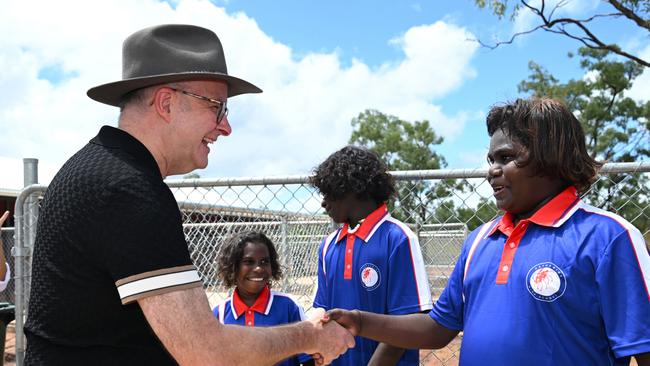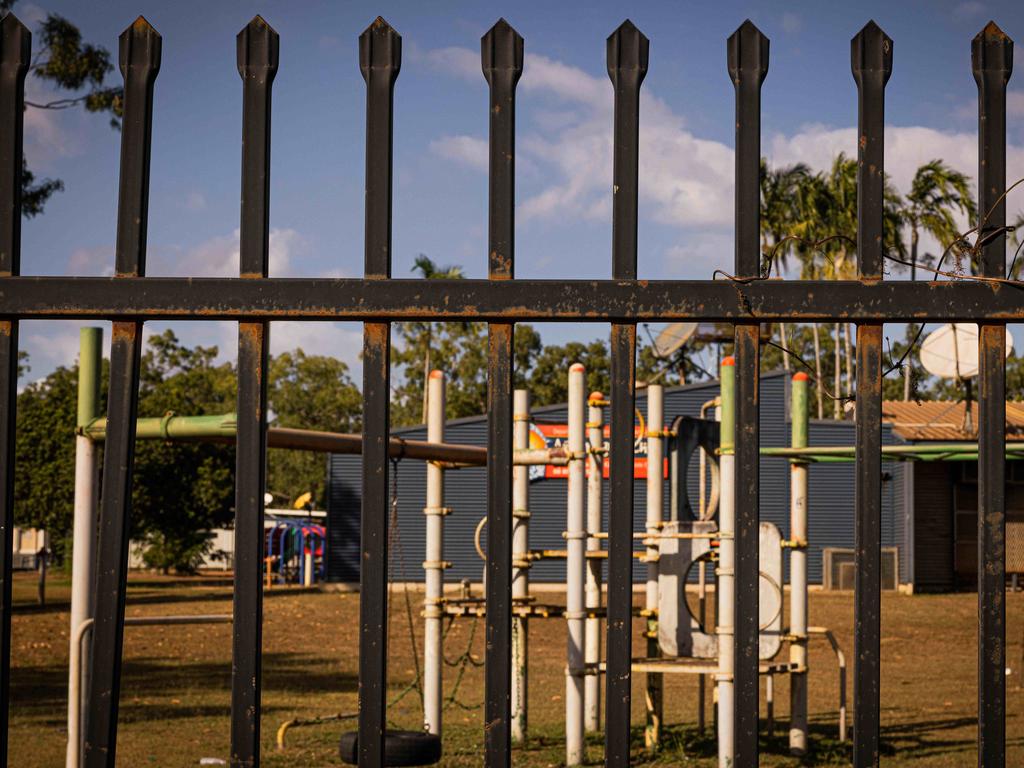Labor’s $1bn NT schools plan is an admission on how far Top End students have been left behind

An extra $737.7m federal funding for NT public schools from 2025 to 2029, as well as $350m more in Territory government funding, is certainly welcome news for schools, teachers, students and especially for remote communities that have borne the brunt of long-term underfunding.
It’s important to remember that this announcement brings students up to a minimum funding standard – education is a human rights obligation, and these funds are the least a child deserves.
For about a decade, students have received a lot less, as revealed by The Australian’s NT Schools in Crisis series last year.
Currently, one in five students in the NT is not funded.
Moreover, the Territory’s attendance-based funding model means underfunding is concentrated in our most remote and vulnerable communities. Some schools receive no funding for more than half of their students. For example, in 2022, Gunbalanya School received no funding for 121 of its 229 students and Yuendumu School had 89 unfunded students out of 165 enrolments.
It’s not much of a stretch to say these children have had their education stolen from them by successive governments, on both sides of politics.
The damage arising from this shameful legacy of underfunding will not be easy to undo.
In the 2023 NAPLAN results, more than half of NT students failed. And although this funding commitment will help restore programs and support teacher recruitment and retention, it won’t be enough to turn around these disastrous outcomes.
The Schooling Resource Standard is a funding floor – it’s the minimum schools need to keep 80 per cent of their students above minimum NAPLAN standards .
It’s not enough to help close an education gap. It’s not designed to support kids who are struggling.
The impacts of underfunding aren’t just educational – many experts have linked the shortfall to rising crime rates – and children who have fallen through the gaps caused by education funding will have lower health, economic and social outcomes for life.
Under the agreement, the most disadvantaged schools will receive this extra funding first, which is absolutely critical given the NT’s attendance-based funding model has been penalising those schools for almost a decade.
NT Education Minister Mark Monaghan said he hoped to abolish this funding model by 2025, but there has been no clear date for the rollout, and no alternative funding model revealed.
In the meantime, there’s very little transparency around how education funds are spent in the Territory.
More than half of the NT’s 2021-22 $1.179bn education budget went into bureaucracy, while some remote schools don’t have power, water or full-time registered teachers. As a result, it’s likely teachers and principals will welcome this funding with a degree of scepticism. They will want assurances, transparency, and potentially federal oversight of spending, to make sure it gets to where it’s most needed.
If it does get to the right places, it could be life-changing for thousands of students. The announcement is also an important admission of how far behind the NT’s education funding has been.
As the NT government limps towards the August election, we still need to look at how this was allowed to happen, and ensure it doesn’t happen again.
And where is the accountability for the children we have already left behind? What will happen to those who have little shot at ever catching up?






It might be tempting to look at the four-year commitment of more than $1bn in funding for education in the Northern Territory as cause for celebration.